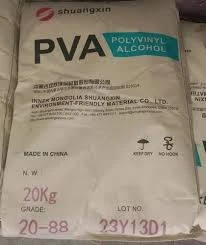Exploring Cellulose Thickener A Versatile Ingredient in Food and Industry
Cellulose thickeners have become increasingly prevalent in various industries, particularly in food processing, cosmetics, pharmaceuticals, and industrial applications. As a plant-derived polysaccharide, cellulose is an organic compound abundant in the cell walls of plants, making it an eco-friendly ingredient that caters to the growing demand for sustainable and natural additives.
What are Cellulose Thickeners?
Cellulose thickeners are derived from natural cellulose fibers, which can be modified to enhance their thickening properties. The most common types of cellulose thickeners include hydroxypropyl methylcellulose (HPMC), carboxymethyl cellulose (CMC), and microcrystalline cellulose (MCC). These thickeners are known for their ability to improve texture, consistency, and stability in various products.
Applications in Food Industry
In the food industry, cellulose thickeners play an essential role in enhancing the texture and mouthfeel of products. They are commonly used in sauces, dressings, soups, dairy products, and baked goods. For instance, HPMC contributes to the creamy texture of ice creams while preventing ice crystal formation, ensuring a smooth experience for consumers. Similarly, CMC is a popular thickener in gluten-free baked goods, as it mimics the elasticity typically provided by gluten.
Moreover, cellulose thickeners exhibit excellent water-holding capacity, which helps maintain the desired consistency of food products over time. They also act as stabilizers, preventing separation in emulsions and suspensions. This characteristic is particularly vital in low-fat and reduced-calorie products, where achieving the right mouthfeel can be challenging.
Advantages of Using Cellulose Thickeners
1. Versatility Cellulose thickeners can be utilized across various food formulations that require specific textural attributes. Their ability to gel and stabilize makes them adaptable for diverse applications.
cellulose thickener

2. Natural Origin As they are derived from plant materials, cellulose thickeners appeal to consumers seeking cleaner labels and natural ingredients in their food.
3. Health Considerations Cellulose is indigestible and can contribute to dietary fiber intake. This can be particularly beneficial in promoting digestive health while adding minimal calories to food products.
4. Stability Cellulose thickeners are resistant to heat and acidity, making them suitable for processed foods that undergo heating or sterilization. This stability helps maintain product quality throughout its shelf life.
5. Cost-Effectiveness Compared to other thickening agents, cellulose thickeners are often more economical, providing manufacturers a way to enhance product consistency without significantly increasing production costs.
Applications Beyond Food
The benefits of cellulose thickeners extend beyond the food industry. In personal care products, they are frequently used as thickening agents in lotions, creams, and gels, offering improved texture and stability. In the pharmaceutical sector, cellulose thickeners help formulate suspensions and gels for medications, ensuring effective delivery and consistent dosing. In construction, cellulose derivatives are utilized in adhesives, paints, and coatings to enhance viscosity and workability.
Conclusion
Cellulose thickeners are remarkable ingredients with a multitude of applications across various industries. Their natural origin, versatility, and ability to improve product consistency make them indispensable in the formulation of many items consumers use daily. As industries continue to prioritize sustainability and health, the role of cellulose thickeners is likely to expand, contributing to better products and a more environmentally-friendly future. By understanding and leveraging these incredible compounds, manufacturers can enhance product quality while meeting the evolving preferences of consumers around the globe.
-
The Application and Significance of Construction RdpNewsMay.19,2025
-
Industrial Grade HpmcNewsMay.19,2025
-
Building Coating Adhesive Building Coating Adhesive HpmcNewsMay.19,2025
-
Application Of Hpmc For Detergent For Detergent In DetergentsNewsMay.19,2025
-
Application Of Hpmc Cellulose In Cement-Based MaterialsNewsMay.19,2025
-
Application Of High Quality Hpmc For Construction In The Field Of ConstructionNewsMay.19,2025




